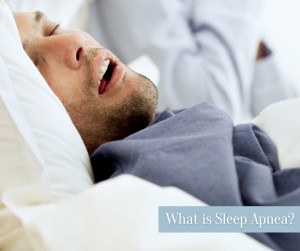We’ve all heard the dreaded term, but what is sleep apnea?
The most common type of sleep apnea {temporary cessation of breathing} is obstructive sleep apnea. It is characterized as a potentially dangerous sleeping disorder where the sufferer possesses an inability to keep a clear airway while sleeping, causing temporary oxygen deficits. The lack of oxygen can mean shorter, more shallow breaths OR a lack of breathing completely during sleep. Breathing pauses can occur 30 times or more per hour!
Is there really any harm to me if I take breathing pauses during sleep?
Yes. Some negative effects of untreated sleep apnea include the following:
- Heart failure
- Diabetes
- Obesity
- High blood pressure, heart attack or stroke (potentially leading to death)
- Feeling groggy in the morning, feeling tired, feeling unfocused or irritable
So, what do I do if I think I might have sleep apnea?
Your family physician must be the one to diagnose your disorder.
- Some forms of sleep apnea can be treated with lifestyle and dietary changes
- The CPAP (Continuous Positive Airway Pressure) Machine is a machine that delivers oxygen through a mask or nosepiece. The patient must wear the mask every night to reap the benefits and notice improvement. Some say this machine can be bulky, loud and uncomfortable. Many people also report having difficulty breathing while wearing the CPAP. Prescriptions for CPAP machines are normally obtained through physicians.
- The sleep appliance is an appliance that we use as an alternative to the CPAP. It is a lightweight, comfortable appliance that positions your jaw in a way that prevents obstruction while you sleep. Call our office if you have any questions relating to the revolutionary SomnoDent appliance.


